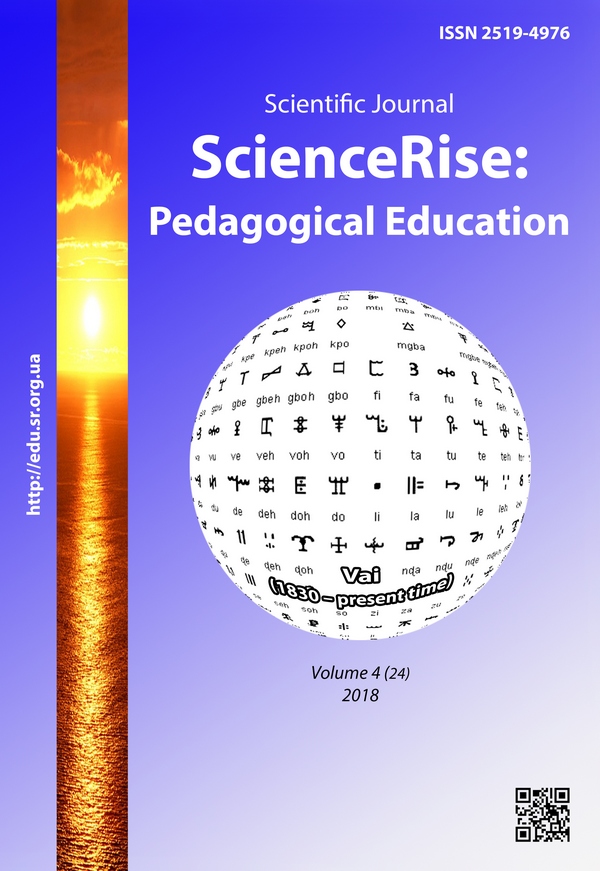Licensed integrated examination "Step 1. medicine" in the bogomolets national medical university as education quality control indicator
DOI:
https://doi.org/10.15587/2519-4984.2018.130216Keywords:
Licensingintegrated examination «Step 1. Medicine», Bogomolets National Medical University, analysis of resultsAbstract
The study is devoted to analysis of students’ readiness to the licensing integrated examination “Step 1. Medicine” in Ukraine 2017 year. The results of the examinations related to the students-citizen of Ukraine and foreign students (Russian and English speaking) studying in medical schools of the country. More successful results of the licensing integrated examination “Step 1. Medicine” were revealed for students-citizens of Ukraine. The scores of Bogomolets National Medical University students were examined in more details in comparison to the results of students from other high medical schools of Ukraine. Higher scores of the students of Bogomolets National Medical University there were shown in comparison with the scores of students from other high medical schools of Ukraine. The results of the licensing integrated examination “Step 1. Medicine” were compared for students of medical #1, 2, 3, 4 faculties, the medical-psychological faculty and faculty for training doctors for the armed forces of Ukraine. Analysis of Bogomolets National Medical University students scores shows that students of medical faculties #1, 2 passed the exam more successfully than students of medical faculties #3, 4, medical-psychological faculty and faculty for training doctors for the armed forces of Ukraine. The results of the licensing integrated examination “Step 1. Medicine” of students-citizens of Ukraine for 2017 were analyzed and compared with the same data for 2015–2016. This comparison shows that better result of the licensing integrated examination “Step 1. Medicine” of students-citizens of Ukraine where obtained 2016 year. The results of students were analyzed by subtests, which are included to the licensing integrated examination “Step 1. Medicine”. It was shown that the best results of students of Bogomolets Medical University where achieved in a discipline pharmacology, that corresponds to common results of examination in the country. The scores of students of medical faculty #2 Bogomolets National Medical University were examined in more details by every discipline, which are included to the licensing integrated exam “Step 1. Medicine”. The results are presented in analytic tables
References
- Moskalenko, V. F. (Ed.) (2013). Z pidhotovky do litsenziinykh intehrovanykh ispytiv «Krok 1» i «Krok 2» yak haluzevoho monitorynhu yakosti vyshchoi medychnoi osvity vidpovidno do Yevropeiskykh vymoh. Kyiv, 16.
- Case, S. M., Swanson, D. B. (2002). Constructing written test questionsfor the basic and clinical sciences. Philadelphia: National Board of medical Examiners, 180.
- Palchevskyi, S. S. (2008). Pedahohika. Kyiv: Karavela, 496.
- Stechenko, O. V. (2015). Yevrointehratsiini zminy u vyshchii medychnii ta farmatsevtychnii osviti: naiblyzhchi perspektyvy. Liudynoznavchi studii. Seriia «Pedahohika», 1 (33), 202–211.
- Selskyi, P. R. (2015). Obgruntuvannia zastosuvannia ROC-analizu pokaznykiv uspishnosti z fundamentalnykh medychnykh dystsyplin v yakosti markeriv vyznachennia hrup ryzyku pry skladanni litsenziinoho intehrovanoho ispytu dlia pidvyshchennia yakosti pidhotovky likariv. Visnyk naukovykh doslidzhen, 2, 121–124.
- Johnson, T. R., Khalil, M. K., Peppler, R. D., Davey, D. D., Kibble, J. D. (2014). Use of the NBME Comprehensive Basic Science Examination as a progress test in the preclerkship curriculum of a new medical school. Advances in Physiology Education, 38 (4), 315–320. doi: 10.1152/advan.00047.2014
- Donnon, T., Paolucci, E. O., Violato, C. (2007). The Predictive Validity of the MCAT for Medical School Performance and Medical Board Licensing Examinations: A Meta-Analysis of the Published Research. Academic Medicine, 82 (1), 100–106. doi: 10.1097/01.acm.0000249878.25186.b7
- Haiova, L. V., Litvinova, N. Iu., Obernikhina, N. V., Kefeli-Yanovska, O. I. (2015). Analiz rezultativ skladannia litsenziinoho intehrovanoho ispytu «Krok 1. Zahalna likarska pidhotovka» studentamy medychnoho No. 2 fakultetu Natsionalnoho medychnoho universytetu imeni O. O. Bohomoltsia. Naukovi zapysky, 128, 25–35.
- Obernikhina, N. V., Haiova, L. V. (2016). Rezultaty skladannia litsenziinoho intehrovanoho ispytu "Krok 1. Zahalna likarska pidhotovka" Natsionalnoho medychnoho universytetu imeni O. O. Bohomoltsia. Naukovi zapysky, 131, 67–80.
- Stechenko, O. V., Ostapiuk, L. I. (2016). Optymizatsiia orhanizatsii navchalnoho protsesu na kafedrakh universytetu yak vazhlyva skladova vnutrishnovuzivskoi systemy upravliannia yakistiu. Klinichna ta eksperymentalna patolohiia, 15 (2 (56)), 108–111.
- Gayova, L., Yanitskaya, L., Obernikhina, N., Sanzhur, T. (2017). Licensed integrated examination “Step 1. Dentology” in the Bogomolets National Medical University as education quality control indicator: inter-dissiplanal integration. Monitoring aspect. ScienceRise: Pedagogical Education, 7 (15), 15–18. doi: 10.15587/2519-4984.2017.107335
- Oliinyk, I. Yu. (2012). Vykorystannia suchasnykh informatsiinykh tekhnolohii dlia samopidhotovky studentiv do litsenziinoho ispytu «Krok-1. Stomatolohiia». Klinichna anatomiia ta operatyvna khirurhiia, 11 (2), 126–129.
- Kuzniak, N. B., Bambuliak, A. V., Honcharenko, V. A., Dmytrenko, R. R. (2014). Systema dystantsiinoho navchannia yak efektyvna skladova pidhotovky likariv-interniv do litsenziinoho intehrovanoho ispytu «Krok-3.Stomatolohiia». Molodyi vchenyi, 7 (10), 119–120.
- Krok 1. Available at: https://www.testcentr.org.ua/uk/krok-1
- Perepelytsia, O. O., Hrozav, A. M. (2014). Problemy pidhotovky provizoriv z kursu orhanichnoi khimii do LII «Krok 1. Farmatsiia». Bukovynskyi medychnyi visnyk, 18 (4 (72)), 263–268.
Downloads
Published
How to Cite
Issue
Section
License
Copyright (c) 2018 Nataliya Obernikhina, Lesya Yanitskaya, Tetyana Sanzhur, Tetyana Pradiy

This work is licensed under a Creative Commons Attribution 4.0 International License.
Our journal abides by the Creative Commons CC BY copyright rights and permissions for open access journals.
Authors, who are published in this journal, agree to the following conditions:
1. The authors reserve the right to authorship of the work and pass the first publication right of this work to the journal under the terms of a Creative Commons CC BY, which allows others to freely distribute the published research with the obligatory reference to the authors of the original work and the first publication of the work in this journal.
2. The authors have the right to conclude separate supplement agreements that relate to non-exclusive work distribution in the form in which it has been published by the journal (for example, to upload the work to the online storage of the journal or publish it as part of a monograph), provided that the reference to the first publication of the work in this journal is included.








